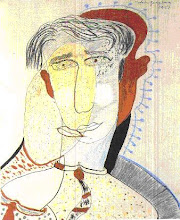
Turkey's greatest living writer and the 2006 Nobel Laureate, Orhan Pamuk, sprang into the western literary circle with his two spectacular novels- Snow and My Name is Red. Their poignancy lofty meditation on the East-West relations and aesthetic theory were more than enough to mesmerize the western literary circle.
Having already read the two aforementioned novels, I was all too eager to indulge in his earlier novels, the cauldron from which these two spectacular later novels sprang. It was with this mounting sense of eagerness that I started with his third novel, and the first novel to be translated into English,The White Castle.
Pamuk's first two novels, Cevdet Bey and His Sons and The House of Silence, which are yet to be translated into English, show a heavy tilt towards the western literary heavyweights. Cevdet Bey and His Sons is a family history faintly reminiscent of Thomas Mann's Buddenbrooks, while the latter's episodic structure and multiple narrations faintly harks back to the Modernist tradition of Faulkner and Woolf. In a similar vein, The White Castle is no exception.
Set in the 17th century Istanbul, the story revolves around an anonymous Venetian scholar captured by Turkish pirates and brought to Istanbul and sold into slavery to a certain Turkish intellectual, Hoja. Now here lies the crux of the story: Hoja and the Venetian look exactly similar. Apart from an exploration of master-slave relationship, this novel is also a Post-Modern allegory of the loss of Oriental identity in the face of Western onslaught and the concept of the "Other", something that he elaborates further in his later novels. Like his later novels, this one too has the Pamukian trademark of melancholy, longing and the touch of fragile beauty plastered all over it. At the end of the day, it's a strong evocation of a nation's identity perilously suspended between the East and West.
